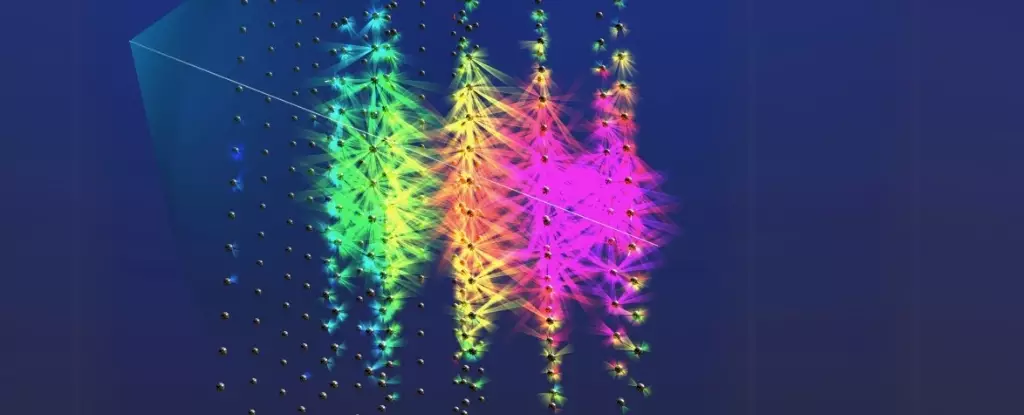In recent years, the discovery of high-energy neutrinos has transformed our understanding of the cosmos. Scientists are continually at the forefront of unraveling the mysteries surrounding these nearly invisible particles that permeate the universe. On February 13, 2023, an exciting breakthrough occurred when researchers detected an extraordinary neutrino event that eclipses all previous records, significantly advancing our knowledge of high-energy astrophysical processes.
Neutrinos are elementary subatomic particles known for their minimal interaction with matter, which allows them to travel vast cosmic distances without obstruction. Unlike other particles that can be charged or have significant masses, neutrinos are neutral and were once believed to have no mass at all. They are abundant, with trillions passing through our bodies every second. Despite this copious presence, their elusive nature poses significant challenges for detection. Specialized facilities like the Cubic Kilometer Neutrino Telescope (KM3NeT), located 3,450 meters beneath the Mediterranean Sea, are instrumental in identifying these ghostly particles.
The KM3NeT arrays consist of numerous light-sensitive modules that observe the faint flashes of light generated when neutrinos interact with the surrounding medium—water in this case. The groundbreaking event in February involved over 28,000 photons that lit up simultaneously, indicating a significant neutrino interaction. This marked the first detection of a neutrino carrying an astonishing energy of around 220 petaelectronvolts (PeV), a staggering leap from the prior record of 10 PeV. Such energy levels compel scientists to rethink the mechanisms behind cosmic particle acceleration.
The exceptional energy of this neutrino triggers questions regarding its potential origins. A candidate list emerges, including phenomena capable of accelerating particles to such extreme levels. Astrophysical sources such as supernovae, gamma-ray bursts, and black holes are prime suspects. Among these, blazars—a type of active supermassive black hole emitting a powerful jet of particles—stand out due to their unique alignment with Earth.
While researchers identified a region of the night sky from which the neutrino originated, pinpointing an exact source remains complex. The team systematically evaluated possible origins situated within our galaxy, neighboring celestial phenomena, and distant galaxies. Unfortunately, none of the initial hypotheses appeared to fit the observed data sufficiently. The lack of compelling local sources shifted the focus towards extragalactic origins, reinforcing the significance of blazar activity in generating such intense neutrino energy.
While active supermassive black holes present viable explanations for the event, another intriguing possibility revolves around cosmogenic neutrinos. This hypothesis suggests that high-energy neutrinos can be formed when cosmic rays collide with photons from the cosmic microwave background—the residual radiation from the Big Bang. If the February event truly involves a cosmogenic neutrino, then it could represent an unprecedented achievement in particle astrophysics.
The implications of such a discovery would be monumental, as it would provide evidence of cosmic ray interactions taking place on a scale previously unattainable. It would offer insights into the history of the universe and validate theories about its early conditions and consequent evolution. As scientists continue to analyze the cosmic data collected, the prospect of unveiling the origins and mechanisms of neutrino production grows ever closer.
Despite the innovative strides made in recognizing the record-breaking neutrino, researchers acknowledge that the investigation is far from complete. Over a dozen possible blazar candidates have been cataloged in the extensive review process, but none have been definitively linked to the neutrino’s astronomical journey. The authors of the study underscore that the current findings necessitate further probing, emphasizing the need for multi-wavelength observational strategies to consider alternative explanations for this cosmic marvel.
As we navigate the cosmos, the pursuit of understanding high-energy neutrinos symbolizes a broader quest for knowledge within the field of astrophysics. This journey may ultimately lead to revolutionary discoveries that reshape the parameters of cosmology, offering answers to profound questions about the nature of the universe and the fundamental forces that govern it. The tale of the record-breaking neutrino serves as a reminder of humanity’s unyielding quest to explore the unknown and illuminate the darkness that envelops our universe.


Leave a Reply